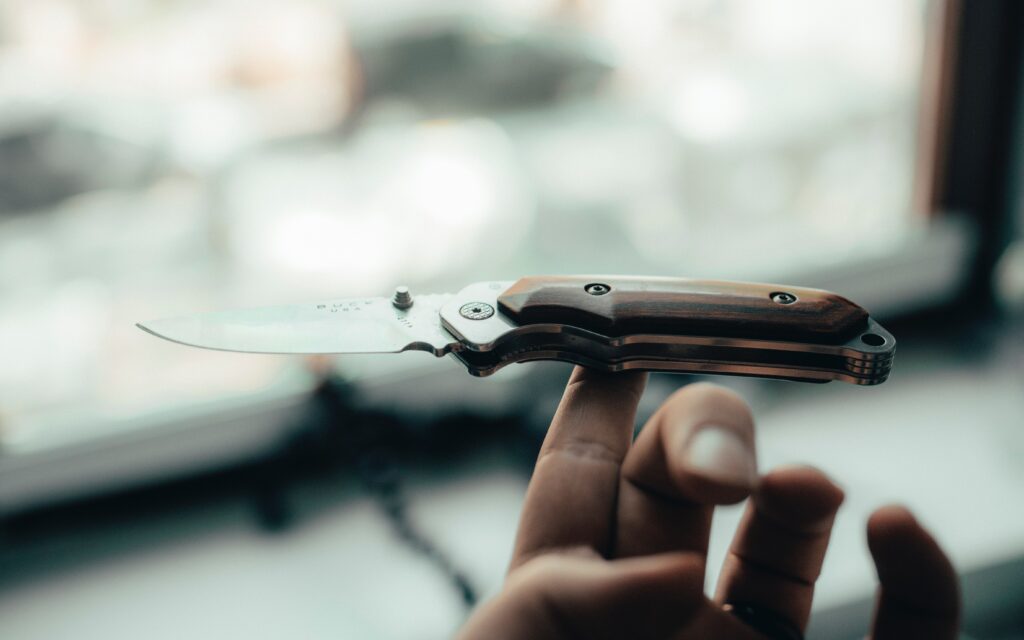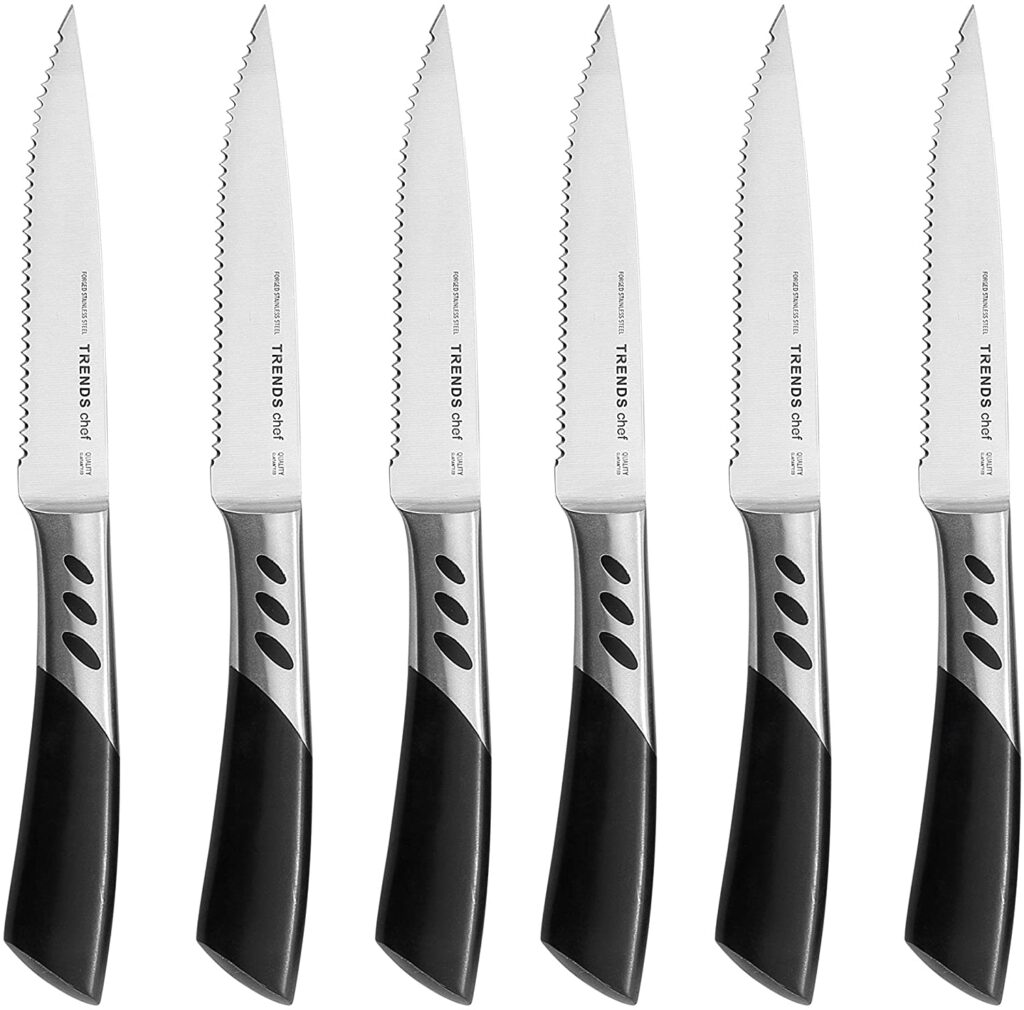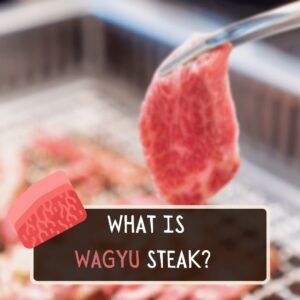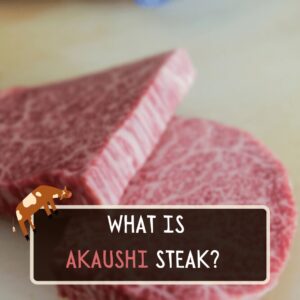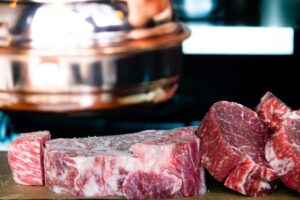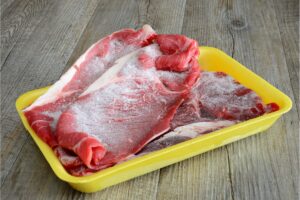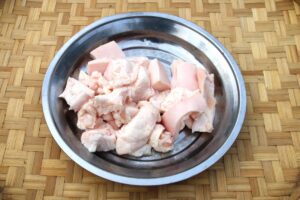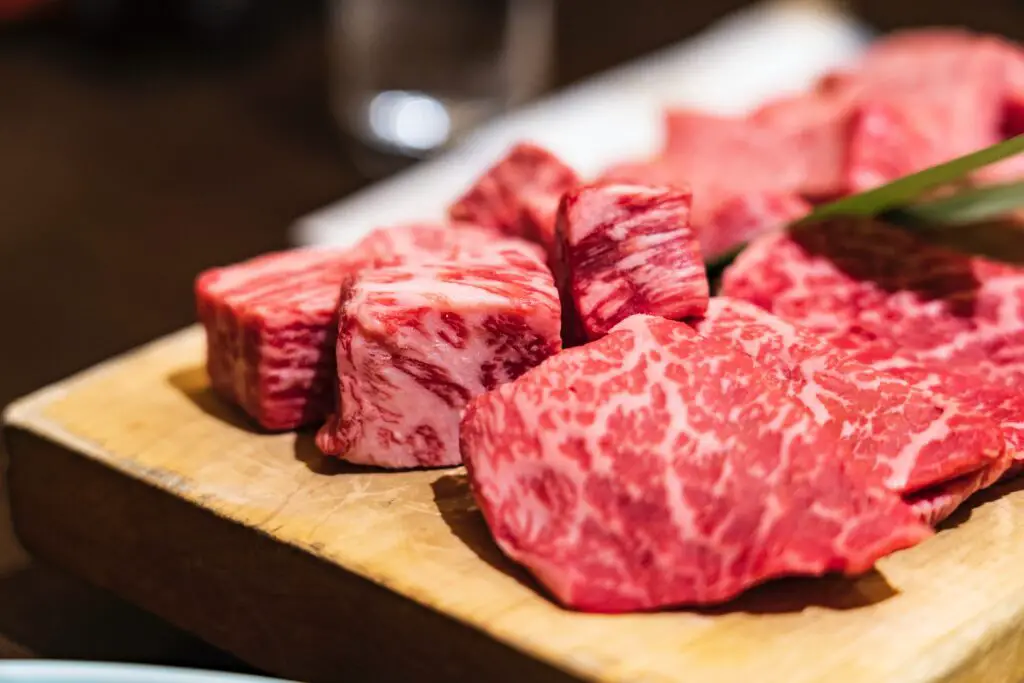Steak knives are indispensable for every home. If you choose the wrong one when considering Serrated vs. Non-Serrated Steak Knives, you won’t be able to enjoy that magical butter-basted ribeye without losing too much juice.
But when you actually go shopping, you’ll probably get dazzled between the dozens of different iterations: forged vs. stamped, bolstered or not, full or partial tang, etc. Believe it or not, nothing of this serves a crucial difference! It all boils down to your personal preferences when you are trying to buy the best steak knives for wagyu or other steaks
There’s, however, one debate that can make a world of difference: serrated vs non-serrated steak knives. Read on to find out what makes each type stand out.
Serrated Steak Knives
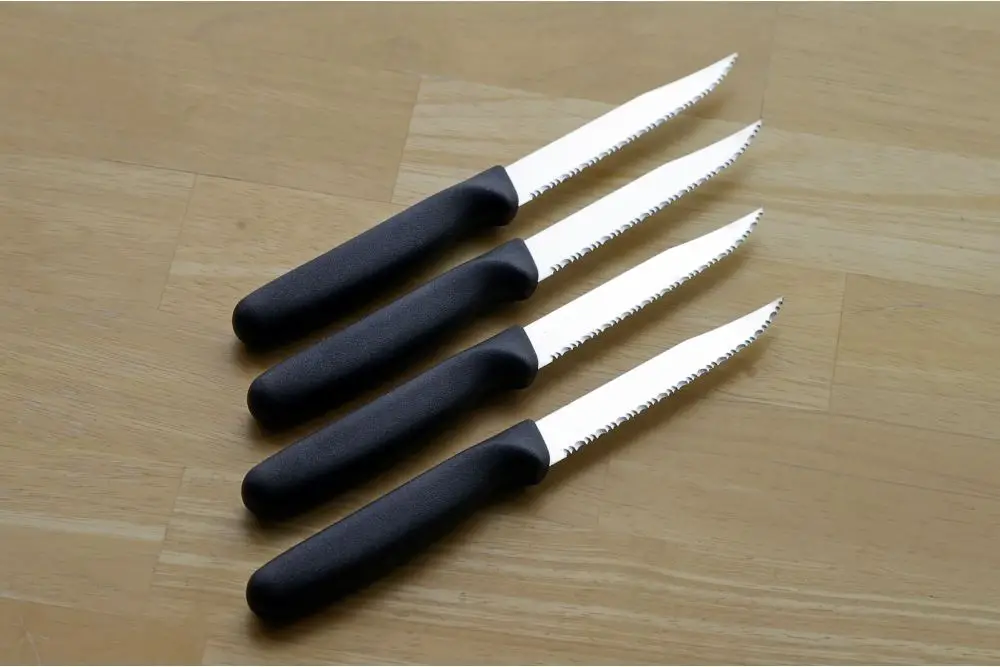
When it comes to steak knives, it is serrated knives you are likely the most familiar with. The majority of people tend to assume that serrated steak knives are the best option. While this may be the case for some knives, this is not true for all knives.
If you are unsure of what serrated steak knives are, they are essentially knives that do have an uneven edge. These edges can also be referred to as scallops, and some knives will be more serrated than others. This is done deliberately as the serrated edges ensure that it is easier to cut through certain types of food.
While serrated knives are commonly associated with being used to cut steaks, there are a number of different types of serrated knives. For example, bread knives are serrated too as this ensures that you can cut through the bread easily without it being ruined.
Serrated knives allow you to cut through things more smoothly. While this may not seem the case as the edges are uneven rather than straight, this is what allows for easier cutting. When a knife has a straight edge, this can actually make it more difficult to begin cutting through certain types of food.
However, a serrated knife almost causes a tear, and the way in which it cuts the meat at slightly different positions, allows a person to cut through it easier. In addition to this, serrated knives do typically stay sharper for longer due to the shape of the edges.
When it comes to sharpening a serrated knife, even though they do not need to be sharpened as often, it is more difficult to do. This is because one edge of the knife is thicker than the other so it cannot be sharpened evenly. Given this, you will need to use a sharpening rod for the best results.
Overall, given how easy it is to use a serrated knife for cutting meat, it is easy to see why it is the preferred option for many.
Non-Serrated Steak Knives
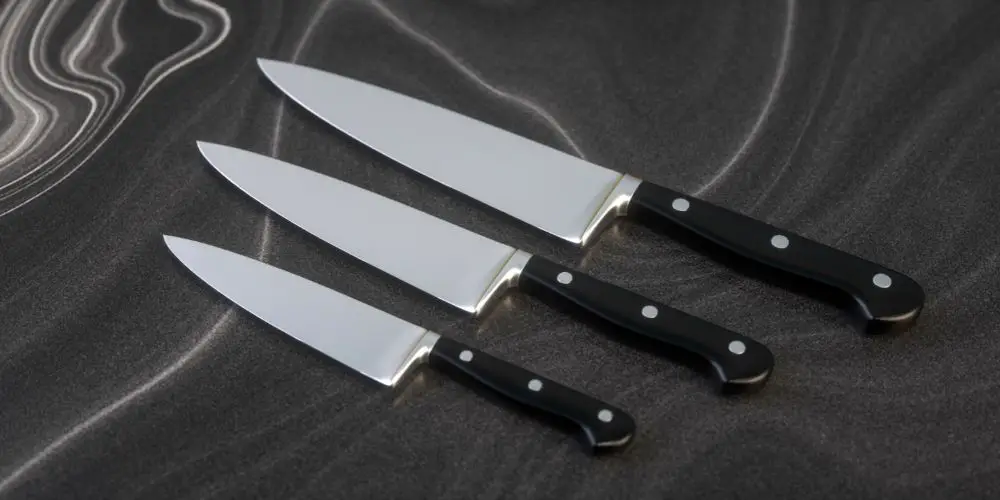
While serrated steak knives are a popular choice in many restaurants and for many people, non-serrated steak knives remain a firm favorite with others. As the name suggests, non-serrated steak knives are very different to their serrated counterparts. Instead of having an uneven edge, they have a sharp straight edge.
This straight edge means that they cut through the steak cleanly, and do not cause tears like serrated knives do. This type of cutting causes mixed opinions with steak enthusiasts because typically they can be more difficult to use.
However, as they cut the steak cleanly, they do keep more juices within the meat. While some people are not bothered by this, it is a dealbreaker for others. Although they are seen as slightly more difficult to use on the whole, cutting steak is still easy with non-serrated knives.
The only thing you will need to be aware of with non-serrated knives is that they do require sharpening more often than serrated knives. This is due to their shape and how the knife edge is used.
While this may be off putting for some people, this does not take long to do, and it is an easy task. When you compare knife sharpening for non-serrated knives, this is a far quicker process than with serrated knives, and you can use a regular blade sharpener too.
Which is Better?
Taking all of this into consideration, it is difficult to decide which is better than the other as both serrated and non-serrated knives have their pros and cons. However, on the whole, serrated knives are regarded more highly for use as a steak knife.
Their serrated edge allows you to cut through the steak with no issues, and these knives are easy to use. While they are slightly more difficult to sharpen, they do not require sharpening very often. When they do need to be sharpened this can be done fairly easily with a sharpening rod.
While non-serrated knives do help to lock in the juices from the steak, in some instances, it can be more difficult to cut through the steak. In addition to this, they do become blunt more easily, which means they need to be sharpened more often than a non-serrated knife. However, they are easier to sharpen which is a positive.
Design
Before we start analyzing the difference in performance, we’ll need to highlight the basic structural variance.
Serrated Knives
As the name implies, serrated knives are created with multiple teeth-like projections. Between every two teeth, there are hollow depressions that are known as gullets.
Contrary to common belief, these serrations aren’t randomly designed. The sharp projections should have certain angles and sizes in order to deliver an ideal performance.
To put things into perspective, let’s first look at the serrations of a survival knife. Wide gullets are generally more common since they can cut ropes easier.
On the contrary, serrated steak knives have much narrower gullets. Also, the teeth-like projections are typically made with the same pointed angles of a knife’s tip. Although it seems negligible, this design tweak is the key to efficient performance, but more on that later.
Non-Serrated Knives
There’s nothing meticulously fancy about non-serrated knives. They have a straight, razor-sharp edge that smoothly pushes through the meat.
What About “Dimples”?
Dimples, aka Granton edge, are shallow indentations that are located just above the blade’s edge. If you come to think of it, they can be considered as serrations but on the blade’s side rather than the edge.
A dimpled knife excels in terms of maneuverability. They can cut through steak with minimal suction since the blade makes less contact with the meat.
Performance
Alright, let’s see how the different designs perform on a dinner table.
Serrated Knives
Let me ask you this: what’s the most forceful part of a knife? In other words, what part can stab and pass through hard objects? It sure is the tip, right? But why? It’s all about physics.
Do you recall the law that says pressure equals force divided by area (P = F/A)? This means that as the cutting tool gets smaller, it becomes much more powerful.
Like I said earlier, the serrations are meticulously designed to act like tiny tips. This way, serrated knives can “saw” their way into foods with a tough exterior. That’s why bread knives are almost always serrated.
Non-Serrated Knives
It’s true that non-serrated knives aren’t as powerful as their pointy counterparts. If you try to use them to cut bread, you’ll inevitably compress the soft interior while cutting the tough crust.
Does this mean they’re worthless? Absolutely not. Their incredible sharpness makes them ideal for making smooth, precise cuts in delicate foods like tomatoes.
Edge Retention
If you’re unfamiliar, edge retention describes how long a knife can stay sharp.
When you use a serrated knife to make a downward cut over ceramic plates, the hollow glutes rarely touch the plate. This way, the knife can keep sewing through foods with an extremely sharp edge for a long time.
Plain knives, on the other hand, thump on the plate with the full edge. With time, the constant force will flatten the edge until it becomes completely dull.
Sharpening
Although plain knives dull faster, their sharpening process is much easier than their pointy alternatives. You can use a sharpening rod, whetstone set, or an electric sharpener. As long as you know what you’re doing, you’ll obtain excellent results with minimal effort.
Unfortunately, things aren’t that straightforward with serrated knives. Using the previous methods might destroy the special angles that make these knives particularly unique.
Your best bet here would be a thin, conical file. You’ll have to sharpen each gullet on its own, though, which can be quite tiresome. Also, this process will only hone the edge rather than sharpen it. In other words, it’ll just polish the surface to remove any irregularities, which should slightly improve the cutting smoothness.
But if you’ve had your knife for a long time, it stands to reason that this rudimentary approach won’t cut it. In that case, you’d better hand it to a professional that knows how to maintain the most intricate angles. Unfortunately, when deciding between serrated vs. non-serrated steak knives you have to keep this in mind.
Serrated vs. non-serrated steak knives? The winner is?
As you probably know, not all steaks are created equal. Some meat can be extremely tender, while others can be astoundingly tough. This depends on many factors like the meat grain, the fat percentage, and the amount of connective tissue.
Use Plain Knives With Tender Steak
With tender meat, just say no to serrated knives. The powerful serrations would tear through the fragile fibers and destroy that heavenly texture. Plus, because tender steak can’t hold their ground, the fibers will be squashed back and forth before they get cut. This is bad because it’ll strip most of the flavorful juices of your steak.
Here are some of the most famous tender cuts, listed in ascending order from softest to firmest:
- Tenderloin steak (filet mignon)
- Top blade steak
- Top loin steak (sirloin)
- Standing rib roast
- Ribeye steak
- Chuck roll roast
- Clod roast
- Round tip roast
Use Serrated Knives With Tough Steak
A plain knife will probably struggle with tough steaks. Yes, it’ll eventually cut, but it’ll have squeezed most of the juices onto the plate. Serrated blades would steadily saw their way into the firm fibers with minimal, if any, pressure.
Here’s a list of the firmest meat, listed from the moderate to the toughest:
- Round tip steak
- Bottom round roast
- Chuck tender steak
- Eye of round roast
- Eye of round roast
- Top round steak
Summary
To conclude, it is down to the individual in regard to which is the better steak knife, and everyone will have their own preferences regarding this.
The most important thing to remember when choosing a steak knife, regardless of if it is serrated or non-serrated, is that they are good quality. While they are more expensive, purchasing good quality steak knives are essential. You will certainly be able to tell the difference between a good quality set and one that is not.
You do not need to spend a significant amount of money to purchase a good quality steak knife set, there are many affordable options available that are made using durable, and good quality materials.
As you saw, there’s no one-size-fits-all answer to the serrated vs. non-serrated steak knives debate. If you ask me, I’d say get both! If you’re eating a tender steak, like a wagyu rib-eye for example, you’ll have to use a plain knife. By extension, tough steaks demand powerful serrated alternatives.

